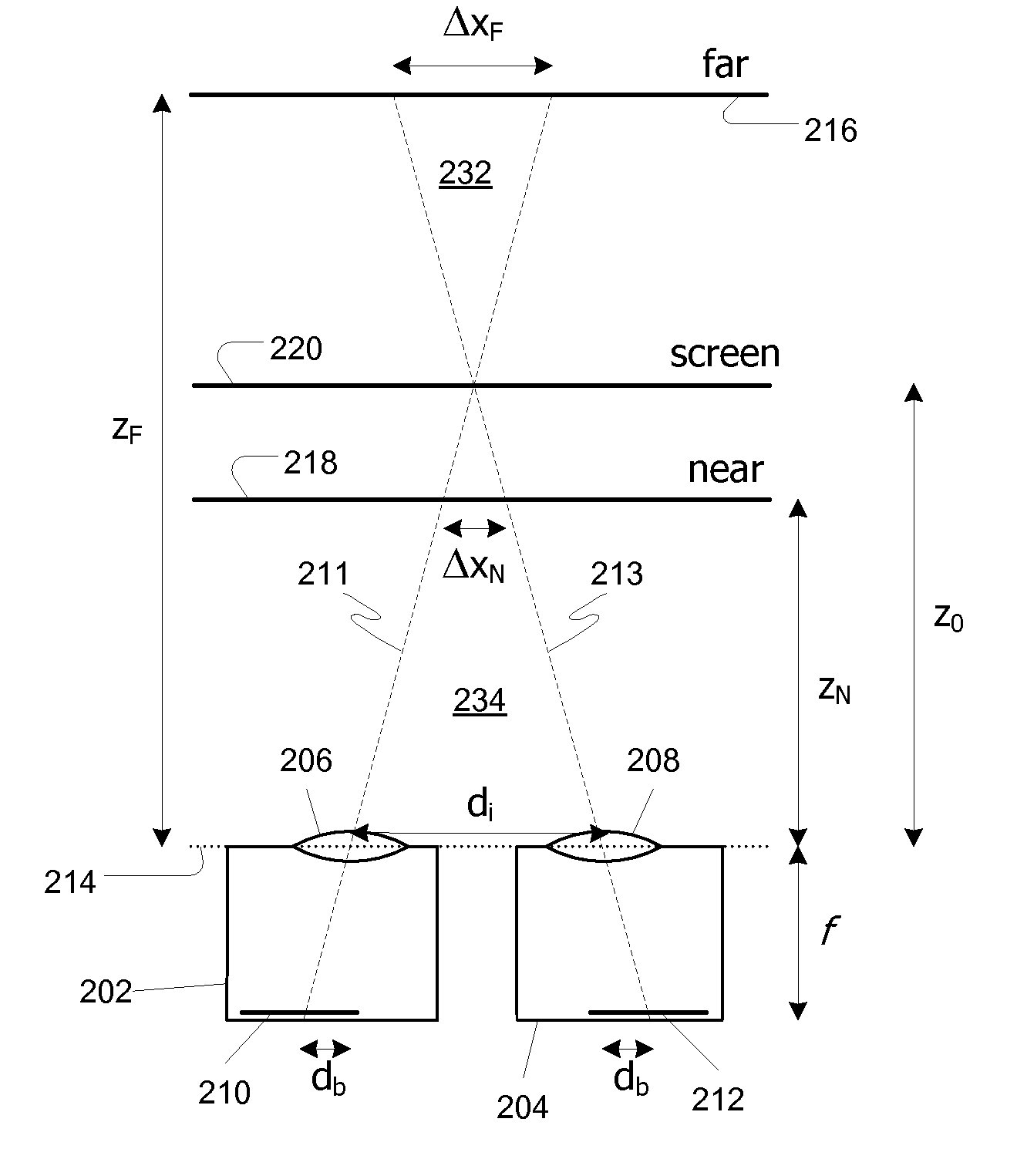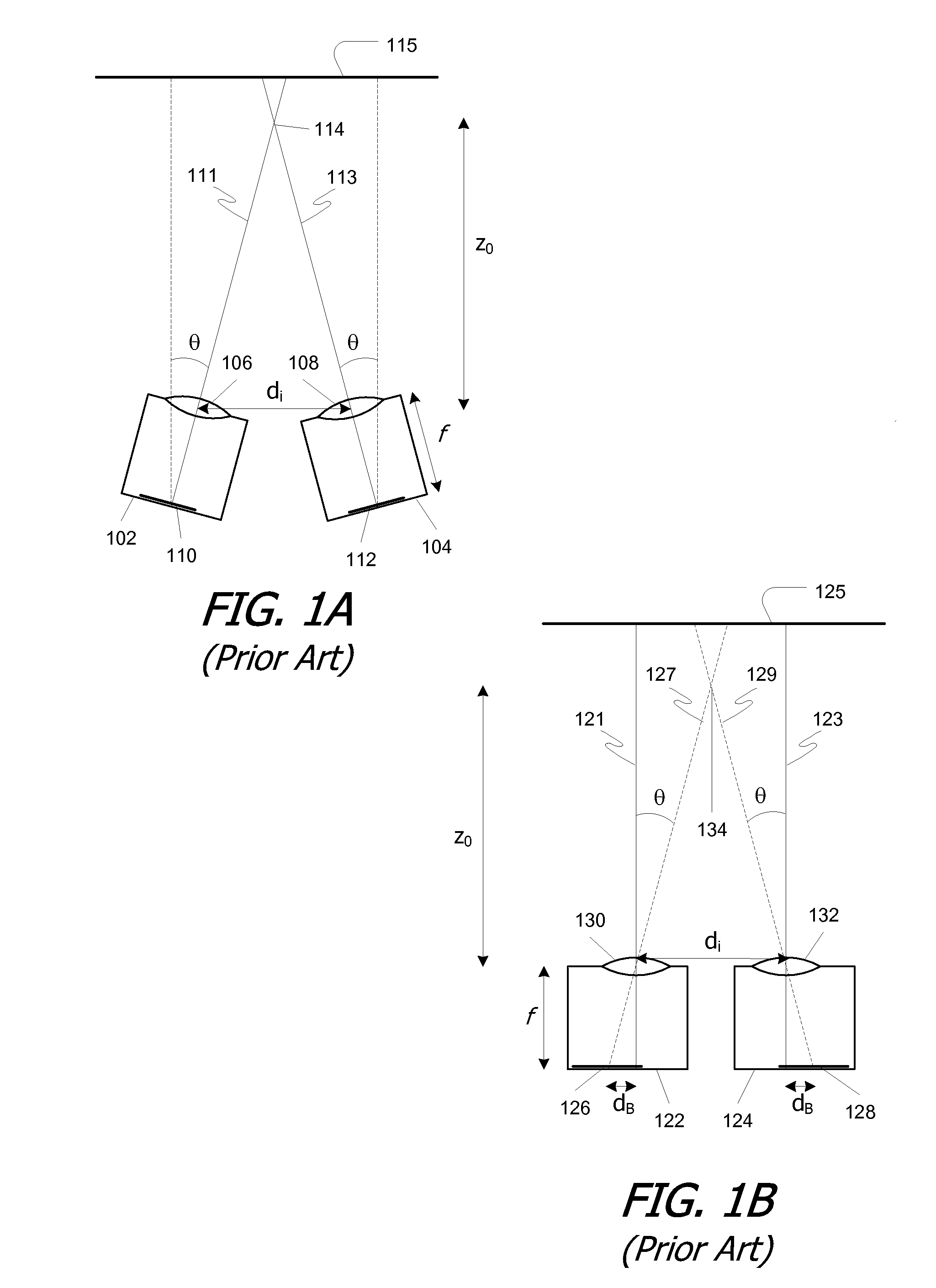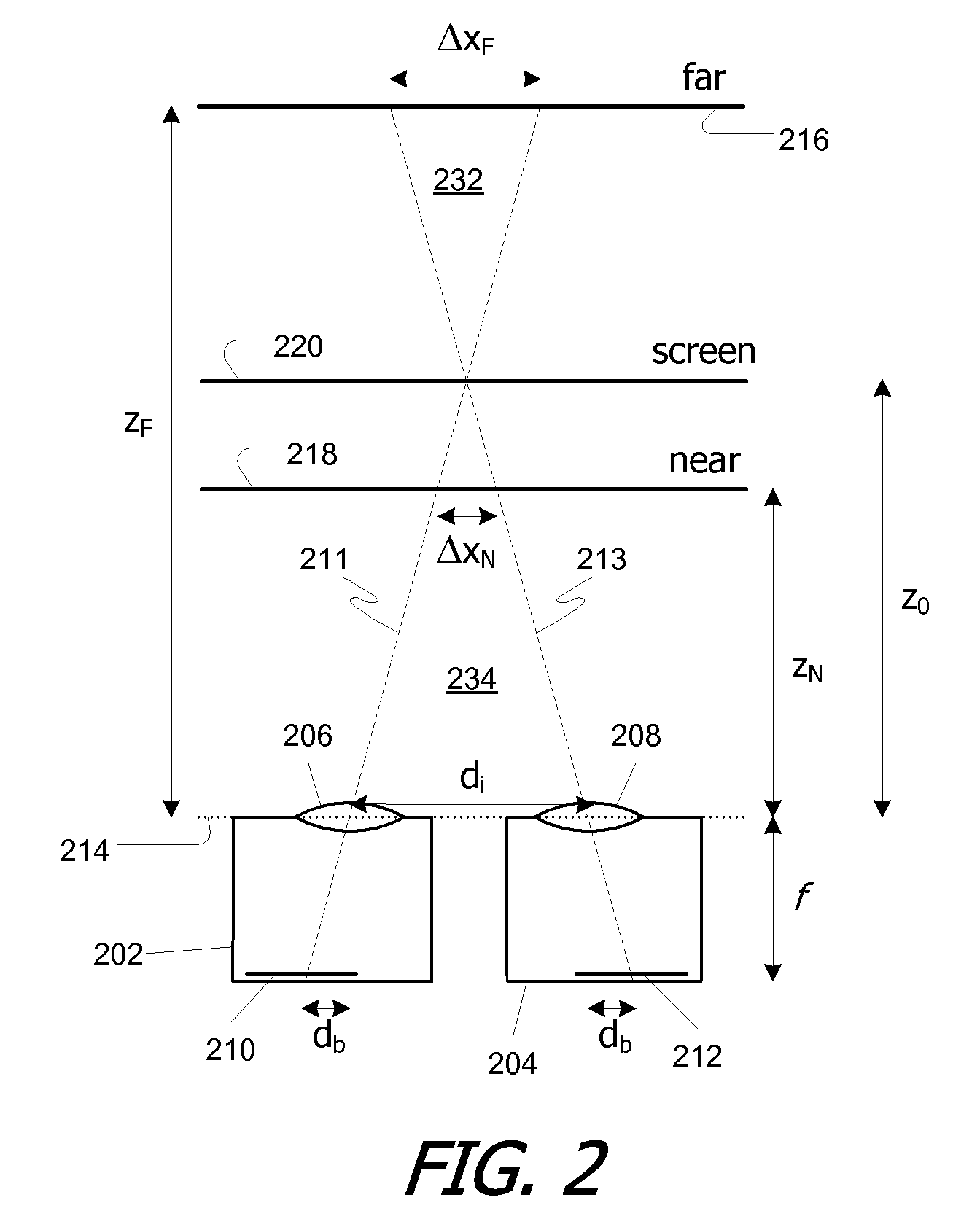Generation of three-dimensional movies with improved depth control
a three-dimensional, depth control technology, applied in the field of video clips, can solve the problems of flatness, distortion of three-dimensional images generated using the technique of fig. 1a, and single-camera films that do not provide depth information to the viewer, so as to improve the control of camera parameters, improve the viewing experience, and smooth the effect of the variation of the convergence distance of the viewer
- Summary
- Abstract
- Description
- Claims
- Application Information
AI Technical Summary
Benefits of technology
Problems solved by technology
Method used
Image
Examples
Embodiment Construction
[0023]Embodiments of the present invention provide techniques for creating 3-D, or stereoscopic, movies that allow improved control over stereoscopic parameters and / or editing of depth in post-processing to provide for a smoother variation in the viewer's convergence distance and a more pleasant viewing experience. These techniques can be applied in both computer-generated and live-action 3-D movies.
[0024]As used herein, the term “movie” should be understood to refer broadly to a sequence of images that when viewed in succession produce the effect of viewing a moving image. The images can be live-action, computer-generated, or a mix of live-action and computer-generated elements, and the sequence can have any length desired (e.g., two minutes to two or more hours). The images can be captured and / or displayed using analog or digital media, or a combination thereof (for example, a computer-generated image printed onto movie film). A “shot” refers to a subset of a movie during which ca...
PUM
 Login to View More
Login to View More Abstract
Description
Claims
Application Information
 Login to View More
Login to View More - R&D
- Intellectual Property
- Life Sciences
- Materials
- Tech Scout
- Unparalleled Data Quality
- Higher Quality Content
- 60% Fewer Hallucinations
Browse by: Latest US Patents, China's latest patents, Technical Efficacy Thesaurus, Application Domain, Technology Topic, Popular Technical Reports.
© 2025 PatSnap. All rights reserved.Legal|Privacy policy|Modern Slavery Act Transparency Statement|Sitemap|About US| Contact US: help@patsnap.com



